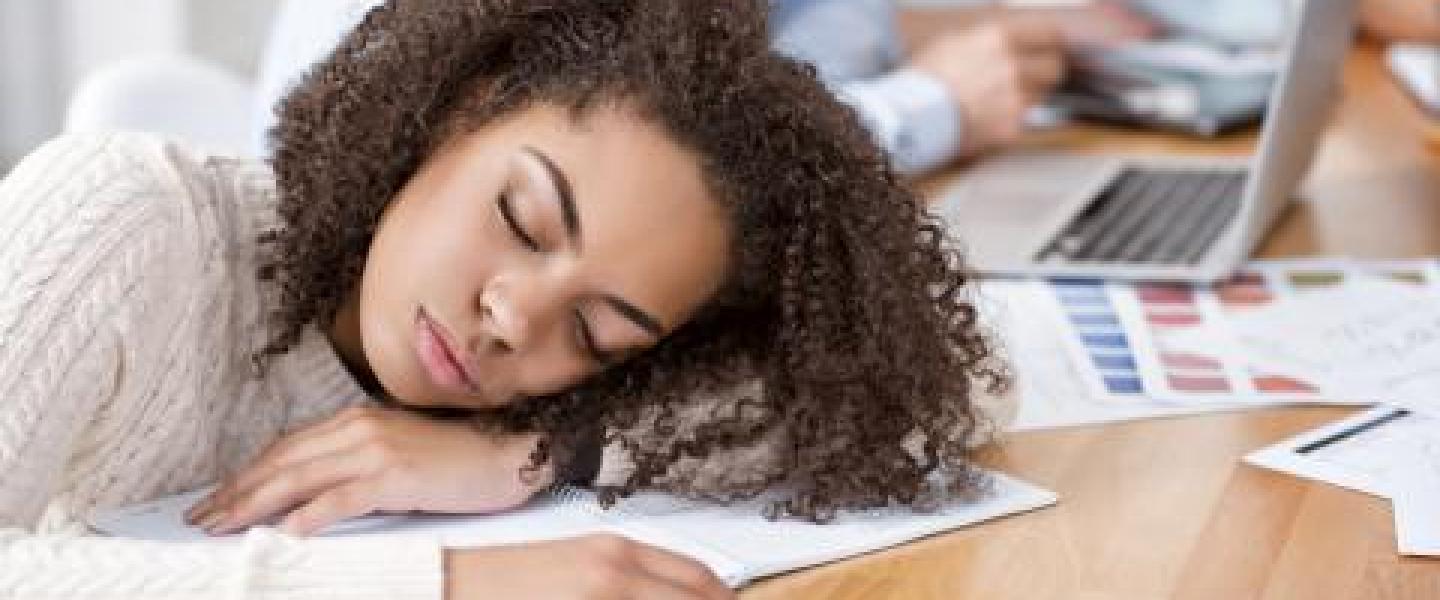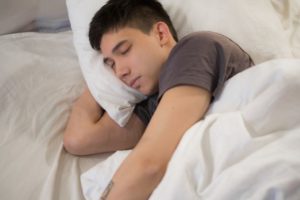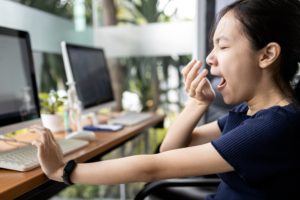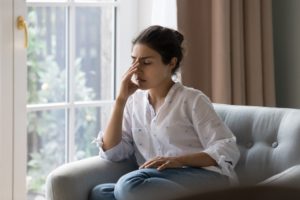Hypersomnia Tests and Diagnosis
- A hypersomnia diagnosis requires a detailed review of your medical history and an exam.
- Polysomnography, actigraphy, and multiple sleep latency tests are common diagnostic tools to assess an individual’s sleep patterns.
- Record your symptoms and any sleep problems before seeing a doctor for a comprehensive evaluation.
Everybody experiences occasional daytime sleepiness . While it’s natural to feel tired after losing sleep, sometimes daytime sleepiness occurs even when a person gets the recommended amount of sleep. When tiredness interferes with daytime functioning and isn’t caused by a lack of sleep, a doctor may suggest testing to diagnose or rule out hypersomnia.
Hypersomnia is a condition characterized by excessive sleepiness that occurs when a person should feel awake. Learn more about tests and other measurements used to diagnose hypersomnia and how to talk to your doctor about excessive sleepiness.
What is Hypersomnia?
Hypersomnia is a condition in which a person experiences hypersomnolence, a symptom that describes feeling unusually sleepy during the day or oversleeping. Other symptoms of hypersomnia may include:
- A desire to nap throughout the day, even at inappropriate times
- Waking up from naps feeling unrefreshed or disoriented
- Low energy, slow thinking, or slow speech
- Anxiety, irritation, or restlessness
- Appetite loss
- Hallucinations
The term hypersomnia describes a sleep disorder within a broader category of conditions called central disorders of hypersomnolence . These sleep disorders are unique in that the excessive sleepiness occurs on its own, rather than as a result of another cause like disturbed nighttime sleep or jet lag. Central disorders of hypersomnolence include narcolepsy, Kleine-Levin syndrome, and idiopathic hypersomnia.
- Narcolepsy: Narcolepsy is a sleep disorder associated with daytime sleepiness. The most common form of narcolepsy also involves transient muscle weakness , called cataplexy, vivid hallucinations when falling asleep, and sleep paralysis.
- Kleine-Levin Syndrome: Kleine-Levin Syndrome is a rare disorder characterized by episodes of severe sleepiness that may be accompanied by other symptoms such as confusion, increased appetite, increased sex drive, and behavior changes.
- Idiopathic hypersomnia: Idiopathic hypersomnia is a sleep disorder in which people during the day and may find it difficult to wake up in the morning or from a nap. Some people with idiopathic hypersomnia sleep as much as 11 hours a day or more without feeling refreshed.
Hypersomnia can also be caused by a health condition, medication or substance, or a mental health condition.
- Hypersomnia due to a medical disorder: Hypersomnolence may be caused by a number of medical conditions, including Parkinson disease, traumatic brain injury, stroke, brain tumors, and infections.
- Hypersomnia due to a medication or substance: The symptoms of hypersomnia can be caused by sedative medications, including benzodiazepines, opioids, and some antidepressants. People who misuse certain substances, like alcohol and marijuana, may also be diagnosed with hypersomnia.
- Hypersomnia associated with a psychiatric disorder: Mental health conditions associated with hypersomnia include depression, bipolar disorder, and seasonal affective disorder.
- Insufficient sleep syndrome: This form of hypersomnia may be diagnosed when a person experiences chronic sleep loss and a doctor can’t find any physical or psychological causes of excessive sleepiness.

How is Hypersomnia Diagnosed?
To diagnose the cause of excessive sleepiness, doctors begin by collecting a thorough medical history and conducting a physical exam. A medical history includes information about a person’s level of daytime sleepiness, when sleepiness typically occurs, and the duration of symptoms.
To rule out other sleep disorders that may be causing drowsiness, the doctor will also ask about other sleep-related symptoms, including nighttime awakenings, snoring, and evidence of restless leg syndrome. The doctor will also assess other potential causes of sleepiness, like depression and the side effects of medications or substances that are being taken.
Observations from a sleep partner, if available, can also be very valuable, since they can provide information about sleep movements, snoring, breathing problems during sleep, or daytime sleepiness that may not be as obvious to the person being evaluated.
Information provided to the health care provider during a medical history can help them determine which tests are needed in order to diagnose hypersomnia or another underlying cause of excessive sleepiness.
Sleep Diary
A detailed record of daily sleep patterns can be helpful when diagnosing sleep disorders, including hypersomnia. A sleep diary or sleep log involves recording daily details about sleep for one or two weeks. Important details to record each day include:
- When a person got into bed
- How long it took to fall asleep
- How many times they woke up during the night
- The time they got up in the morning
- How much time they spent napping during the day
A sleep diary may be especially helpful for people who have difficulty remembering details about their sleep or who experience irregular sleep patterns from one night to the next.
Epworth Sleepiness Scale
The Epworth Sleepiness Scale is a short questionnaire that asks people to assess their level of sleepiness in common situations. Taking the test involves rating the likeliness of falling asleep in situations such as watching television, riding in a car, or sitting quietly.
A score of 10 or greater is abnormal and can help a person’s doctor differentiate between excessive sleepiness and fatigue or a lack of energy, which may point to a different underlying cause of symptoms.
Polysomnography
Polysomnography, often called a sleep study, provides valuable information about a person’s sleep by measuring an array of body functions while a person is sleeping, such as:
- Sleep stages
- Breathing
- Snoring
- Level of oxygen in the blood
- Electrical activity in the heart
- Sleeping position
- Body movements
Polysomnography can help a doctor diagnose or rule out hypersomnia and other sleep disorders that could be responsible for a person’s sleepiness. While sleep studies are typically conducted in a sleep laboratory, a doctor may recommend an at-home sleep apnea test in place of polysomnography if obstructive sleep apnea is strongly suspected.
Multiple Sleep Latency Test
The multiple sleep latency test (MLST) measures how long it takes an individual to fall asleep, which is called their sleep latency, as well as how many naps include a period of REM sleep. Many people with excessive daytime sleepiness have a sleep latency of around eight minutes.
Typically performed in a sleep lab the day after polysomnography , the test consists of five opportunities to nap. During MLST, a person is placed in a dark, comfortable environment while attached to sensors that measure activity in the eyes and brain .
The MLST can help doctors distinguish between idiopathic hypersomnia and narcolepsy. In narcolepsy, it is common for naps to include REM sleep. In idiopathic hypersomnia, patients will usually fall asleep quickly, yet they will experience fewer episodes of REM sleep.
Actigraphy
Actigraphy tracks a person’s sleep at home using a wearable device. The actigraphy device, called an accelerometer, is similar to a wristwatch and provides measurements that assess a person’s sleep-wake cycles and looks for evidence of sleep disruptions. Actigraphy can also provide information about a person’s daytime light exposure and level of physical activity.
When diagnosing the cause of excessive sleepiness, actigraphy may be used to confirm details of a sleep diary, to ensure a person is a good candidate for MLST, and to determine if insufficient sleep could be the cause of a person’s symptoms.
Lab Tests
Although not always necessary, sometimes laboratory tests may be used to help diagnose or rule out disorders that can cause excessive sleepiness.
- Blood tests: Blood testing can detect low levels of thyroid hormone , evidence of substance use disorder , iron deficiency, or other abnormalities that could cause sleepiness.
- Urine testing: Urine testing may be used to detect substance use or other conditions that may lead to excessive sleepiness.
- Cerebrospinal fluid (CSF) testing: Fluid from around the brain and spinal cord may be tested to look for abnormalities sometimes associated with narcolepsy, multiple sclerosis , or other neurological disorders that can contribute to hypersomnolence.
Talking with Your Doctor About Hypersomnia
When discussing excessive sleepiness with a health care provider, it may be helpful to prepare before the appointment by gathering your medical history and writing down questions about diagnostic tests that may be recommended.
Providing a Sleep History
A thorough history of sleep problems and other health issues can help your health care provider narrow down the cause of symptoms and determine which tests may be needed.
- List your symptoms: Symptoms can be a clue to specific sleep disorders, so record information about sleep symptoms like snoring, frequent wakening, sleep movements, or sleep paralysis. It’s also helpful to write down any daytime symptoms such as sleepiness, muscle weakness, and symptoms of depression.
- Bring a sleep diary: A sleep diary can help your health care provider understand how much sleep you get, how quickly you fall asleep, how often you experience sleep disturbances, and whether your problem is constant or intermittent.
- Talk to your family: Your family, or anyone else who observes your sleep, may provide valuable information about your sleep behavior. Ask if they notice you snoring, having breathing problems during sleep, or any other abnormal symptoms.
- Bring a list of your medications: Since a variety of medications and other substances can cause sleepiness, it is important to share a complete list with your health care provider. Include medications, supplements, and other substances you take regularly.
Questions to Ask About Hypersomnia Tests
If your health care provider schedules a test to diagnose hypersomnia, it may be helpful to ask questions about the test, such as:
- What does this test measure?
- What disorders can this test help diagnose or rule out?
- Do I need to prepare for the test in any particular way?
- How soon will test results be available, and who will report them to me?

Still have questions? Ask our community!
Join our Sleep Care Community — a trusted hub of sleep health professionals, product specialists, and people just like you. Whether you need expert sleep advice for your insomnia or you’re searching for the perfect mattress, we’ve got you covered. Get personalized guidance from the experts who know sleep best.
References
19 Sources
-
National Institute on Aging. (2019, July 22). Fatigue in older adults.
https://www.nia.nih.gov/health/fatigue-older-adults -
National Institute of Neurological Diseases and Stroke. (2022, April 25). Hypersomnia information page.
https://www.ninds.nih.gov/health-information/disorders/hypersomnia -
Chervin, R. D. (2021, September 29). Approach to the patient with excessive daytime sleepiness. In T. E. Scammell (Ed.). UpToDate.
https://www.uptodate.com/contents/approach-to-the-patient-with-excessive-daytime-sleepiness -
American Academy of Sleep Medicine. (2014). The International Classification of Sleep Disorders – Third Edition (ICSD-3). Darien, IL.
https://aasm.org/ -
Scammell, T. E. (2020, August 11). Clinical features and diagnosis of narcolepsy in adults. In A. F. Eichler (Ed.). UpToDate., Retrieved May 25, 2022, from
https://www.uptodate.com/contents/clinical-features-and-diagnosis-of-narcolepsy-in-adults -
Aran, A., Mignot, E., & Arnulf, I. (2021, November 2). Kleine-Levin syndrome (recurrent hypersomnia). In T. E. Scammell & R. D. Chevrin (Eds.). UpToDate.
https://www.uptodate.com/contents/kleine-levin-syndrome-recurrent-hypersomnia -
Chervin, R. D. (2022, January 31). Idiopathic hypersomnia. In T. E. Scammell (Ed.). UpToDate.
https://www.uptodate.com/contents/idiopathic-hypersomnia -
Maski, K. (2021, February 19). Insufficient sleep: Evaluation and management. In T. E. Scammell (Ed.). UpToDate.
https://www.uptodate.com/contents/insufficient-sleep-evaluation-and-management -
Freedman, N. (2021, November 19). Quantifying sleepiness. In S. M. Harding (Ed.). UpToDate.
https://www.uptodate.com/contents/quantifying-sleepiness -
The National Institute for Occupational Safety and Health. (n.d.) Epworth Sleepiness Scale. Centers for Disease Control and Prevention.
https://www.cdc.gov/niosh/emres/longhourstraining/scale.html -
A.D.A.M. Medical Encyclopedia. (2020, January 29). Polysomnography. MedlinePlus.
https://medlineplus.gov/ency/article/003932.htm -
Kramer, N. R. & Millman, R. P. (2021, November 5). Overview of polysomnography in adults. In S. M. Harding (Ed.). UpToDate.
https://www.uptodate.com/contents/overview-of-polysomnography-in-adults -
Preda, A. & Bowman, D. R. (2018, September 5). Primary hypersomnia workup. Medscape.
https://emedicine.medscape.com/article/291699-workup -
National Heart, Lung, and Blood Institute. (2022, March 24). Sleep studies.
https://www.nhlbi.nih.gov/health/sleep-studies -
Nallu, S. (2020, August 3). Narcolepsy differential diagnoses. Medscape.
https://emedicine.medscape.com/article/1188433-differential -
Thomas, S. J., & Gamble, K. (2022, April 6). Actigraphy in the evaluation of sleep disorders. In S. M. Harding (Ed.). UpToDate.
https://www.uptodate.com/contents/actigraphy-in-the-evaluation-of-sleep-disorders -
A.D.A.M. Medical Encyclopedia. (2020, August 29). Hypothyroidism. MedlinePlus.
https://medlineplus.gov/ency/article/000353.htm -
Murray, B. J. (2021, November 2). Excessive daytime sleepiness due to medical disorders and medications. In T. E. Scammell (Ed.). UpToDate.
https://www.uptodate.com/contents/excessive-daytime-sleepiness-due-to-medical-disorders-and-medications -
Olek, M. J. & Howard, J. (2022, May 9). Evaluation and diagnosis of multiple sclerosis in adults. In F. Gonzalez-Scarano (Ed.). UpToDate.
https://www.uptodate.com/contents/evaluation-and-diagnosis-of-multiple-sclerosis-in-adults





